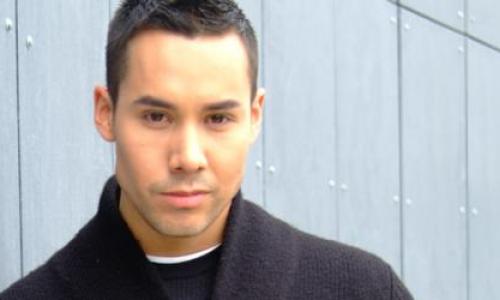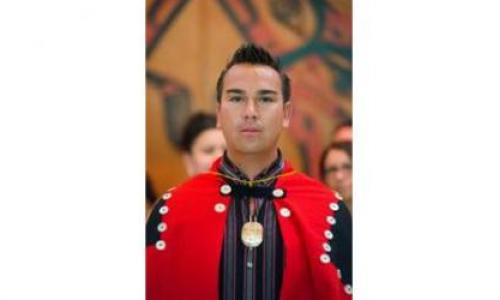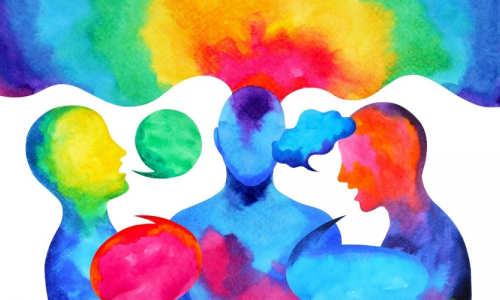
"About 97 per cent of the world’s population speaks 4 per cent of its languages, while only 3 per cent speaks 96 per cent of them. A great majority of these languages are spoken by indigenous peoples, and many (if not most) of them are in danger of becoming extinct” (United Nations, 2014). For the Indigenous languages of Canada, much of the difficulty lies within a lack of accessibility. Technology that might be used as a teaching tool is not easily accessible in remote communities and where there is access to technology, most Indigenous languages are not easily translated into working computer programs. It’s important to understand also, that as mother’s, Indigenous women are more often choosing the dominant language for their children as it is the only socially feasible option"
- (Coolidge, 2014).
An initial examination into the processes that are facilitating the loss of language results in several factors. As Judy Wajcman, a professor of Sociology suggests, it is crucial to focus “upon the changing social relationships within which technologies are embedded and how technologies may facilitate or constrain those relationships”(Wajcman, 2004).
In terms of Indigenous women’s relationship with technology and their changing social relationships within, not only a digitized world but a colonized world, is multi-layered and deserves a close examination into each of those layers. The loss of their traditional roles on the whole is one such layer, another is women’s difficulties with ICT’s (Information Communication Technology) in general and adding race discrimination into the mix adds an entirely new layer.
Finally, and perhaps most significantly, is Indigenous women’s relationship with North America’s education structure. The difficulty for, not just Indigenous women, but for Indigenous people in general lies in the structure itself. Eurocentric education paradigms do not reflect Indigenous people’s experiences as individual sovereign nations with their own culture and traditions that include their own frameworks for learning. It also does not consider historical trauma associated with education that is continually passed down, generation to generation.
Understanding why most Indigenous languages are in danger of extinction and why Indigenous women are not fulfilling their roles as transmitters of language requires an historical overview. With the arrival of the Europeans, First Nation’s faced the devastating effects of colonization that struck straight into the heart of the people; the women. Of course, First Nation men’s experiences were as atrocious and debilitating as the women’s as well. But it is the women who acted as the bond within their families and communities, so when patriarchal ideology settled onto the backs of these women, their gender roles became confused and convoluted, marginalizing them within the whole structure of colonization and within their own communities.
“Separated from traditional social structures and First Nations’ governance norms, stripped of defined roles and responsibilities, the people lost their inner balance as women struggled to maintain social equilibrium. In defeat of these efforts, the collective turned outward to the colonizer in an effort to survive” (Valaskakis, 2009).
In their attempt to survive, First Nation women were caught between their traditional roles, and the new requirements of the colonizers whose doctrine regarding women was born from patriarchy. It was from within this condition of oppression, that First Nation women began adopting a confused sense of self based on the knowledge of who they used to be and who they were supposed to be in a colonized world. In many respects, this condition continues.
Indigenous women in the Western world have yet to claim their traditional roles, because they are still surrounded with the patriarchal ideology that plagues this society. This is evident in virtually every aspect of life in this modern world, particularly within technological structures that govern much of our waking life and must be examined in order to identify further causes of language loss within Indigenous communities.
The gender divide within the current structure of technological frameworks is a glaring symptom of patriarchy that continues to effect the ways in which women are included, or not included rather, in the entirety of the ICT complex. From creation, design, production to distribution, women are largely absent from these processes. Where they are not absent is in its consumption, which begs the question, if women are consuming this technology, should they not also be creating it in order to reflect their own intrinsic needs and values? For Indigenous women, this is a double-edged sword as not only are they confronted with gender and digital divides, they are faced also, with racial and cultural divides as well.
Huyer and Sikoska identify barriers associated with women’s relationships with ICTs. They are:
-
Lower levels of literacy and education, including training in languages which are predominantly used in ICT platforms and the Internet;
-
Less time due to women’s triple role of domestic, productive and community management responsibilities leading to a much longer workday than men’s;
-
Less access to financial resources to cover the cost of equipment and access;
-
Geographical location: in developing countries women tend to live in rural areas more than men, where infrastructure is less dependable, and travel to ICT centres is more difficult due to cost, time, and cultural reasons (Huyer & Sikoska, 2003).
These barriers are reflective of Indigenous women’s experiences as well, but also include their struggles with role negotiation, social issues associated with the effects of colonization, racial and cultural discrimination, and barriers within the institution of education.This sentiment is echoed by Oudshoom, who confirms that design practices are not executed with democracy in mind. The elements of technology produced do not meet needs and preferences across cultures, which in turn, will effect women, especially those whose language and cultural needs are lesser known and valued. These are the barriers in which Indigenous women are separated from their ability to utilize ICTs in order to fulfill their roles as transmitters of language and it is these barriers which have facilitated its loss within Indigenous communities.
As previously mentioned, education continues to be a point of impediment for all First Nation people in North America. Historically, education for Indigenous people has been associated with the residential school experience. The trauma stemming from the forcible removal of Indigenous children from their communities, followed by the systemic physical and sexual abuse that took place in these institutions has often resulted in negative associations and low enrolment rates of First Nation adults, causing a lack of modelling for their youth. Also, and unfortunately, inadequate preparation for Indigenous students is a common barrier to post-secondary. Many Indigenous students complete high school without proper reading, writing, mathematical and comprehension skills. This results in many students leaving post secondary because they are ill prepared and overwhelmed by the coursework.
For Indigenous women, this is two-fold because many of them are also navigating their familial and community responsibilities as well. Therefore, not only are Indigenous women having to face multiple barriers regarding education on the whole, they are then faced with the gender divide within the computer sciences to which all women are confronted. Each and every barrier standing in the way of Indigenous women’s link to ICT’s usefulness in their quest for role fulfillment results in the continued loss of their traditional languages.
The symptoms of language loss and role confusion seem insurmountable, but they must be addressed in order to work against them. Indigenous women face a myriad of processes that strip them of their identities in a colonized world and their relationship with digital forces are equally burdensome, for their race, culture and their gender.
However, it is possible to shift this pattern so that it can begin to transform the technological landscape, by first identifying the constrained relationship of Indigenous women with technology. “The promise of technofeminism, then, is twofold. It offers a different way of understanding the nature of agency and change in a post-industrial world, as well as the means of making a difference” (Wajcman, 2004).
References
Huyer, S., & Sikoska, T. (2003). Overcoming the Gender Digital Divide: Understanding ICTs and their Potential for the Empowerment of Women. INSTRAW Research Paper Series , 1, 1-34.
Oudshoorn, N., Rommes, E., & Stienstra, M. (2004). Configuring the User as Everybody: Gender and Design Cultures in Information Technologies. Science, Technology & Human Values , 29 (30), 30-63.
Valaskakis, G. G., Stout, M. D., & Guimond, E. (Eds.). (2009). Restoring the Balance: First Nations Women, Community, and Culture. Winnipeg, Manitoba: University of Manitoba Press.
Wajcman, J. (2004). Techno Feminism. Cambridge, United Kingdom: Polity Press.
United Nations. (2014). Department of Economics and Social Affairs. Retrieved 05 09, 2014, from Permanent Forum on Indigenous Issues: http://undesadspd.org/IndigenousPeoples/ThematicIssues/Culture.aspx
















